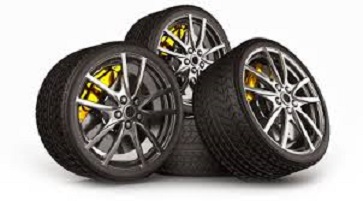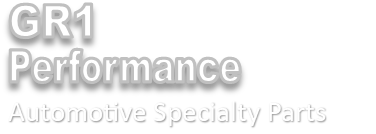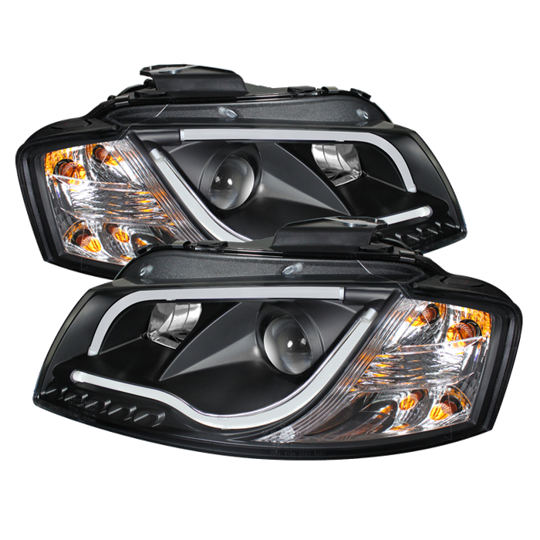
Factors to Consider When Choosing Custom Wheels
There are several factors to consider when you choose custom wheels for your vehicle. Custom rims and wheels are basically the same thing. Some refer to aftermarket wheels as custom wheels. Others refer to them as custom rims. Whatever you call them, you must consider several factors when choosing aftermarket wheels for your vehicle. Let’s begin with the obvious… style!
Choosing Your Wheel Style
Luxury
There are a few different wheel styles in the aftermarket industry to choose from. Knowing how to choose custom wheel styles will prevent waist. Style and aesthetics are important! First, there’s the luxury style, which usually has a chrome finish, or a combination of chrome and different colors including machined and black. Luxury wheels will quickly change the appearance of your vehicle with unique styles that give the vehicle a higher-end luxury look. Typically, consumers will increase the size (diameter) of the wheel. For example, a vehicle owner might convert from a 17 inch diameter wheel to an 18 or 20 inch diameter wheel. We will discuss the technical aspects later, but this is referred as “Upsizing” and requires certain tire sizes based on your vehicle’s make, model, and year.
Your vehicle’s aesthetics is an important factor to consider when choosing your style. Wheel styles are manufactured with different curves and aesthetics. Curves and aesthetics should match the aesthetics of your vehicle. There’s nothing more wasteful than aftermarket wheels in which the aesthetics seem to work against the aesthetics of the vehicle.
Luxury wheels can be forged in either 1 piece, 2 pieces or 3 pieces. The more the pieces, the higher the cost! However, typically 2 and 3 piece wheels are lighter and have greater fitment variations for hard-to-fit, high-end luxury sports vehicles.
Available Brands
- Azara Wheels
- 2Crave Wheels
- Blaque Diamond Wheels
- Spec-1 Racing Wheels
- Blade Wheels
- Grid Off-Road Wheels
- XF Off-Road Wheels
- Blade Wheels RT Series
- Blade Wheels SSL Series
- Heavy Hitter Wheels
- Black Wheels, 20 Inch, 22 Inch, and Up
Brand Websites
- Blaque Diamond Wheels
- 2Crave Custom Wheels
- Blade Luxury Wheels
- Azara Wheels
- XF Off-Road Wheels
- Heavy Hitters Wheels
Racing
Racing wheels are very popular in the aftermarket industry. Many sports car enthusiasts will spruce their vehicles up with racing wheels to give it a cool fast look. Also, racing wheels are typically manufactured with lightweight aluminum to decrease the wheel weight in order to increase the speed of the vehicle. Many racing wheels come with entry level pricing. Car enthusiasts on a budget can afford to hook their ride up without breaking their bank account. Of course, there’s the higher-end racing wheel brands that are forged in 2 or 3 pieces. These wheels are custom fit in terms of offset, backspacing, and width to fit the vehicle with exact specifications. This prevents loss of performance for high-end vehicles with optimal wheel and tire placements.
Racing wheels are typically manufactured with non-chrome finishes such as black, machined, or bronze. Many styles will have combinations of chrome lips with colored or machined spokes to create a bit of bling bling, which tempts many luxury and sedan car owners to put racing wheels on their vehicle instead of luxury aftermarket wheels.
Off-Road
Off-road wheels are typically manufactured for trucks that have been lifted or modified for off-road use. Lift kits used to raise the vehicle typically require more room under the fender to compensate for added shocks, struts, and sway bars. This requires backspacing with lower offsets. We will explain offset measurements later, but for now, the offset measurement places the wheel either closer or further away from the hub. This moves the wheel position inward or outward in terms of “under-the-fender” position.
Choosing Your Finish
Chrome
Chrome wheel finishes are the most popular for luxury style wheels. However, there are several racing styles and off-road-styles that take advantage of the bling as well. Chrome wheels became very popular in the 80s and 90s and has not stopped since. Some manufacturers are moving past the typical 20 inch upsize and going with 22 inch, 24 inch, 26 inch, and even 30 inch wheels.
Painted/Machined
Recently, painted wheels have become very popular. Combinations of chrome and colors have become something of a novelty, creating artists like appearances. The spin effect takes it to another level. Street cruisers are not only wearing larger size wheels, but taking it to another level with enhanced colors to dazzle the audiences. The machined finish has been popular in the racing lines for years. But more recently, the luxury styles and especially the off-road styles have blended their look with machined and painted combinations. More recently a brushed finish has emerged on the market with forged flow technology.
Choosing Your Size
OEM
OEM stands for original equipment manufacturing, otherwise known as OE (original equipment). Car brand OE wheels will vary in diameter and width depending on the vehicle’s sub-model. Of course tire size varies along with the wheel. Typically larger diameter wheels with enhanced finishes are upgrades from the standard models. This makes the aftermarket wheel industry most profitable. OEM wheels can be expensive to upgrade. Aftermarket wheels can usually be outfitted on a vehicle for significantly less. Therefore, upsizing is usually more affordable than OE upgrades.
Aftermarket
Aftermarket wheel sizes are usually larger than the starting wheel size offered with OEM. However, there are many brands that duplicate the OE sizes for those not wanting to decrease the side-wall of the tire. This is necessary to compensate for upsizing the wheel. The most popular starting size with aftermarket wheels are 17 inch wheels.
Many sedans and sport compacts can at least take a 17 inch wheel. Then there’s the 18 inch… car manufacturers use this size as an upgrade for many mid-size sedans. 19 inch wheels are rare and typically used for race styles. 20 inch wheels are the most popular upsize for mid-size sedans and muscle cars. Then there’s the 22 inch and up wheels. These sizes are usually reserved for those who are looking for a show quality look. Of course there’s the large SUVs and trucks which come with OE 22 inch and sometimes 24 inch as the upgraded size. Either way, size is an important factor when choosing custom wheels.

